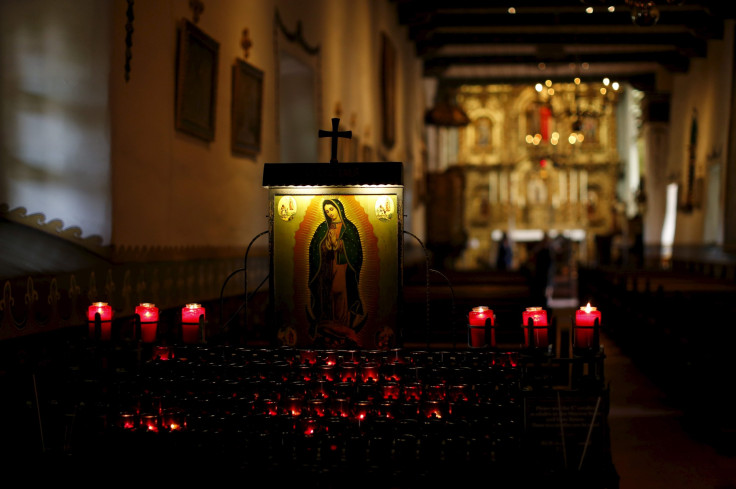What Is The Feast Of The Immaculate Conception? The Meaning Of The Holy Day Of Obligation

Tuesday is the annual Feast of the Immaculate Conception, the holy, solemn day celebrated among Roman Catholics to commemorate the immaculate conception of the Virgin Mary, the mother of Jesus Christ. It is one of the Holy Days of Obligation, meaning observing Catholics should attend Mass and avoid any nonessential work.
While most people know the phrase “immaculate conception,” there is at least one common misconception about the doctrine. The Immaculate Conception does not refer to the birth of Jesus, but rather the birth of Mary to her mother, Saint Anne, according to the National Catholic Register.
Unlike Christ, who according to Scripture is said to be born of virgin birth, Mary was conceived in a normal, biological way. To become the mother of God’s son, Mary was deemed “full of grace” at the moment of her conception, meaning she was free of original sin, according to the Catholic Register.
“The most Blessed Virgin Mary was, from the first moment of her conception, by a singular grace and privilege of Almighty God and by virtue of the merits of Jesus Christ, Savior of the human race, preserved immune from all stain of original sin,” Pope Pius IX proclaimed in 1854, according to the Vatican.
Subscribe before Nov. 29th to join us for a Novena to the Immaculate Conception https://t.co/Oxq4hDOTkg pic.twitter.com/r5Y3tCmipv
— Josemaria Institute (@stjosemariainst) November 25, 2015
Prayers are often said in the days leading up to the holy day. People can participate in novenas, which involves saying the same prayer for nine days in a row, according to the Huffington Post. One of the most common prayers is known as Tota pulchra es, which celebrates Mary’s beauty:
You are all beautiful, Mary.
and the original stain is not in you.
Your clothing is white as snow, and your face is like the sun.
You are all beautiful, Mary.
and the original stain is not in you.
You are the glory of Jerusalem, you are the joy of Israel, you give honor to our people.
You are all beautiful, Mary.
© Copyright IBTimes 2025. All rights reserved.





















